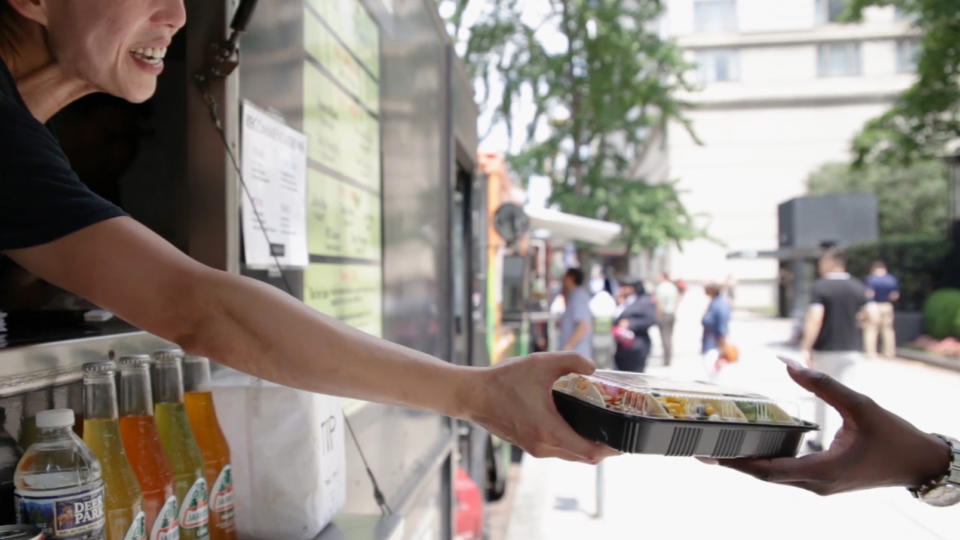When the lunch bell rings, employees in cities across the United States often walk the streets trawling for a good bite to eat — before landing on the humble food truck.
To satiate their rumbling stomachs is an army of vendors that wake up, often before the sun, to prepare their meals.
And many of them are immigrants.
According to a 2015 report by the Institute for Justice, immigrants comprise 51 percent of the profession and the average immigrant vendor as been in the U.S. for 22 years.
For many, the low start-up costs of owning a food truck offers greater opportunity than other professions in the United States.

Illustration by Xianghan Wang.
Of the vendors the Institute of Justice surveyed, 28 percent didn’t complete high school, and 63 percent had no specialized training to become vendors.
“When you get into the country and you want to have your own business, this is a very very low start. You don’t have to invest thousands of thousands dollars,” said Alex Vorobei, an immigrant from Russia and the owner of Bel-Feast Truck in Washington D.C.

Illustration by Xianghan Wang.
In D.C., as in many other cities, food truck owners avoid the high costs of real estate and the burden of staying open all day, and they can design their own hours to match food traffic.
“We just rent a commercial kitchen, the hours are very flexible. It has been the best experience ever, being your own boss, you have your own business,” Sonny Setiantoko, an immigrant from Indonesia and the owner of D.C.’s Saté Truck, said.
But flexibility does not mean ease. Many vendors said that once serving hours are over, they spend hours cleaning, shopping, and preparing for the next day’s lunch rush.

Illustration by Xianghan Wang.
“A lot of people think, ‘Oh, it’s a food truck. They are here, they finish, they go home’,” said Sam Amnani, the owner of DC Taco Truck and an immigrant from Morocco. “After five o’clock I have to go to restaurant depot, I gotta go get all my stuff for the next day.”
In the morning, everything must be prepared in advance to optimize serving hours.
“Lunch starts at 11:30, but I have to be here at like 9:30, and prep everything in the truck,” Vorobei of the Bel-Feast truck said. He wakes up every day at 6 a.m., he added.
The sector is growing fast. Food trucks saw an annual revenue of $960 million in 2017, according to industry research company Ibis World.
For many owners, it’s their chance at the American Dream.
“I’ve never seen people work as hard has Americans do. Here, you hustle hard, you get rewarded. When you come here and you see all these opportunities, of course you are like in heaven,” Amnani said.
Story and video by Zechang Fu, Lisa Chiu, Xianghan Wang, Zixuan Zhao, and Drew Butler.
 CGTN America
CGTN America

